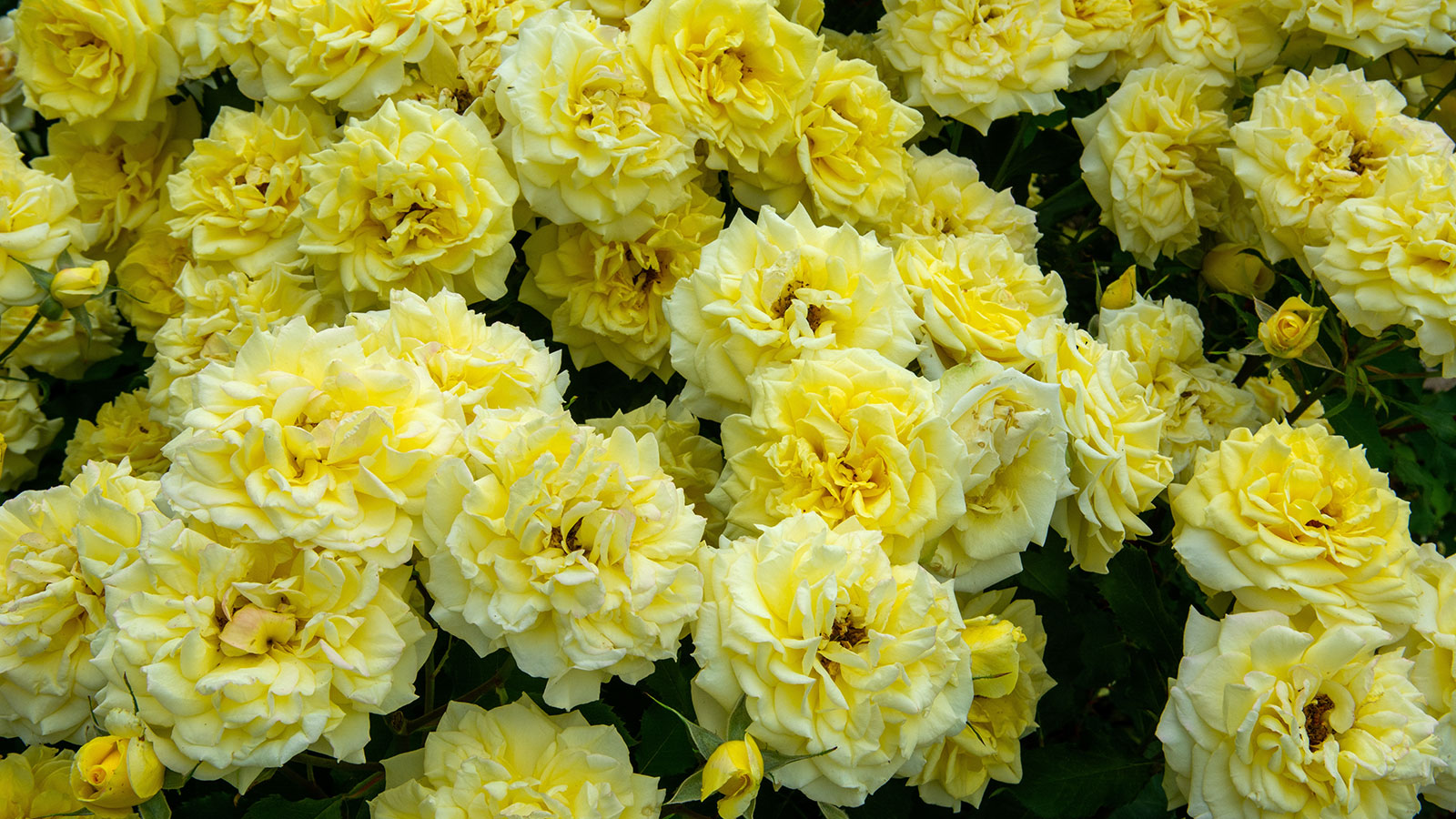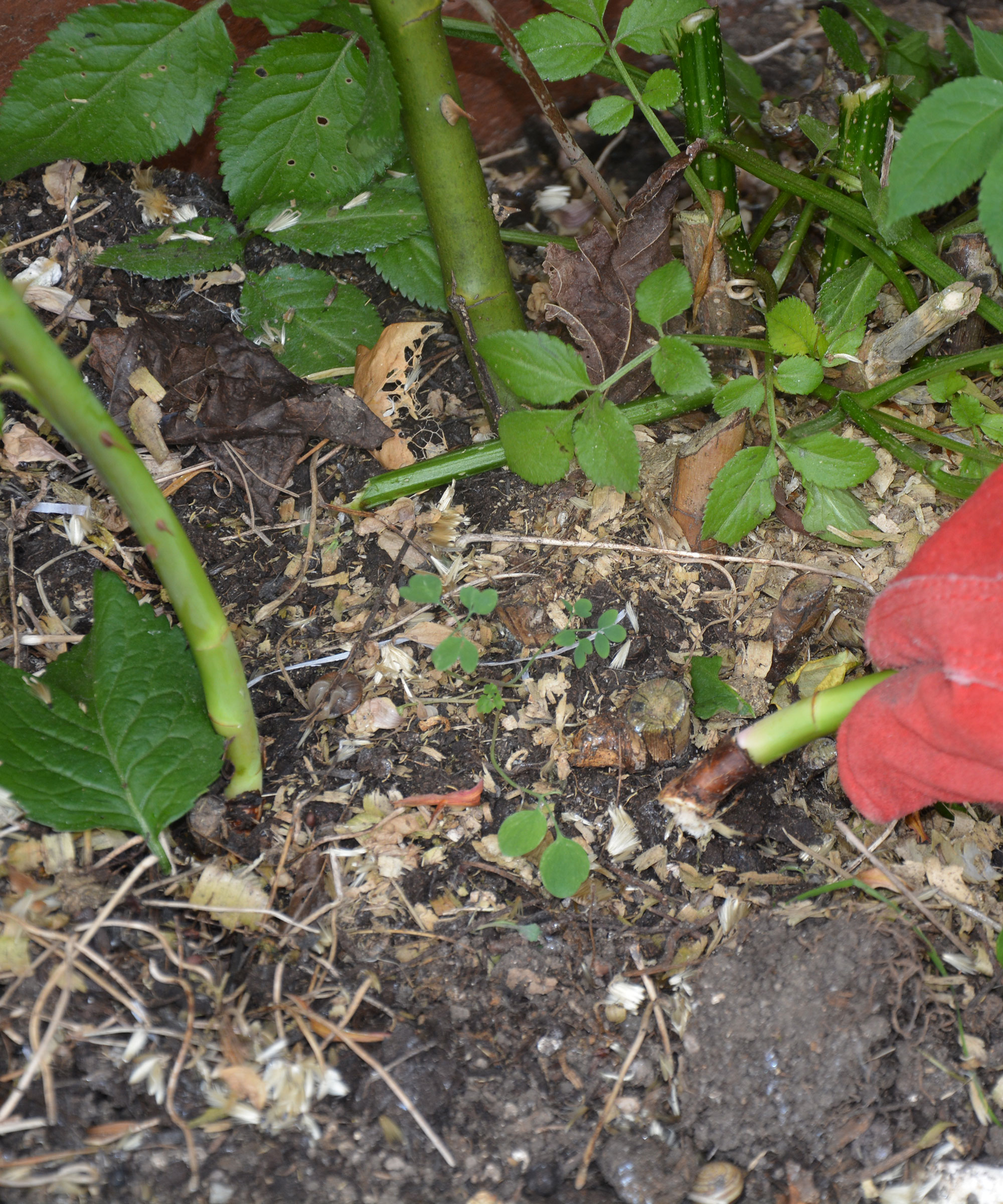What are rose suckers and do I need to remove them? Gardening expert answers your rose dilemma
Our expert guide to identifying and removing these troublesome growths


For all their beauty, roses do present gardeners with quite a few problems. One such issue is rose suckers. These are rogue stems growing from the plant’s rootstock that can rob your rose of health and vigour.
Rose suckers need to be removed as soon as they are large enough to deal with, but it isn’t as simple as just cutting them off at the base, however. It's important to follow the correct method for getting rid of these troublesome stems.
Rose care doesn't simply stop when you've planted a rose, so make sure you keep yours in good health by following my simple tips for dealing with rose suckers.
What are rose suckers?
When you buy and plant a rose you will see a woody knob towards the base of the stem. This is where the top growth of the rose, the variety we choose to purchase, is grafted onto the plant’s hardy rootstock that stays alive under the ground.
When you add a new plant to your rose garden, this graft knobble should be level with the soil or fractionally above it.
Suckers are rogue branches that grow from the rootstock, rather than the flowering portion of the plant. They are often caused when the roots are damaged in transit, during planting or by a gardener being too rough when getting rid of weeds around the rose. They can be avoided by handling roses with care.

The graft union of a rose is the knobbly join where the roots meet the top growth
What do rose suckers look like?
Rose suckers usually appear from the soil an inch or so away from the main plant. Because the suckers grow straight from the root stock they look different from the top growth of the rose.
Design expertise in your inbox – from inspiring decorating ideas and beautiful celebrity homes to practical gardening advice and shopping round-ups.
They are often paler in color, taller and thinner, may not have as many thorns and leaves will look different to the main plant. They are unlikely to flower and if they do, they won’t flower like the variety you bought.
Because suckers grow so vigorously, they are at risk of stealing nutrients and water from the main body of the plant. This weakens the rose and may eventually kill it if they are not removed.

Suckers often appear a small distance from the main rose and look slightly different
How to remove a rose sucker
When you spot what you think may be a rose sucker, trace it back to its base. If it is growing above the graft it is a legitimate part of the rose, but if it disappears into the soil below it, it is a sucker. Correct identification is key to avoid making a rose growing mistake.
You will need:
- Sturdy gardening gloves like this unisex pair of Acdyion gauntlets on Amazon
- A garden trowel
- Pruners
- Pruning wound sealer (optional) such as this one by Bonide, which comes with a brush, on Amazon
- Rose fertilizer
- Compost
Once you have the right equipment for the job, removing it is a simple task:
- Use a garden trowel to scrape away the soil or compost from around the base of the rose until you locate the spot where the sucker joins the rootstock.
- Grasp the sucker with a gloved hand and pull hard, tearing it off at the rootstock.
- Alternatively, take your sharp pruners, such as this sturdy set by gonicc on Amazon, and remove the sucker right at its base.
- The advice used to be to paint wound sealant onto the cut ends where the sucker grew, but this is not always recommended now as the wood should heal healthily by itself.
- Replace the moved compost, then feed the rose with fertilizer and water the soil well.
- Finally, mulch with well rotted homemade compost or farmyard manure.

Tear or cut the sucker from the rootstock at its point of origin
FAQs
Is it better to pull or cut off a rose sucker?
Some gardeners say that removing suckers by cutting them may promote the production of more suckers, so that tearing them off is better.
However, once a rose has started to throw out suckers there is every chance it will continue to do so, whether you cut or pull them away.
Are suckers and water sprouts the same?
They are similar but different. Suckers can appear on many varieties of woody plants and they are always generated from the rootstock.
Water sprouts appear on the trunk and branches instead, but should also be removed as they are usually thin and unproductive, they spoil the shape of the tree or shrub, steal nutrients and hinder good ventilation, making it easier for fungal diseases to develop.
Should I prune my rose after removing a sucker?
Suckers appear during the growing season, so if you cut your rose back then you risk making a rose pruning mistake and losing that summer’s flowers. Make sure you deadhead your rose as each flower fades but leave the actual rose pruning until the fall or late winter.
The exception is rambling roses that only produce one flush of flowers, usually in July. Deadhead your rambler after all the flowers have faded, or leave them intact to produce colorful hips for fall and winter colour.
Should I feed a rose after removing a rose sucker?
Roses are hungry plants so it will do them no harm to feed them with a general plant fertilizer, such as these BioAdvanced rose and plant care granules on Amazon, after removing a sucker.
Water it in and mulch your rose with well-rotted compost or manure.
Remember not to fertilize plants after early August as any new growth brought on by feeding will be soft and vulnerable to cold winter weather, which can cause frost burn and die back.
A final word of warning about rose suckers. Rambling and climbing roses throw out new stems a small distance away from the main growth, so take care not to falsely identify them as suckers and remove them in haste.
Let them grow and only remove them if they bear no resemblance to the main rose. The best time to do this is when you prune your climbing rose.

Ruth is a Contributing Editor for Homes & Gardens, and formerly Gardening Editor of Amateur Gardening magazine. She is horticulturally trained, with a qualification from the Royal Horticultural Society. Her work for Amateur Gardening, the world's oldest weekly gardening publication, involved matching gardening tasks with each season, covering everything from sowing and planting, to pruning, taking cuttings, dealing with pests and diseases and keeping houseplants healthy. She is an expert in ornamental plants and edible crops, and everything she writes about and photographs is in her own garden, that has been a work in progress since her family moved there in 2012.